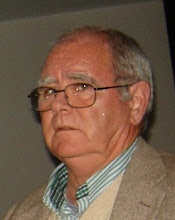Refuting the view of South African veterans
The defeat of UNITA, supported by the South-African racist
The MPLA, using FAPLA, wanted to annihilate the forces of UNITA (FALA) pretending to reach (with operation "Saluting October) the Savimbi´s Headquarters, located in Jamba.
To achieve the goal, they should (primarily) force the Lomba River and capture the town of Mavinga.
The Cuban FAR
did not participate in the operation,
except for sporadic aerial
reconnaissance of the military operation theater.
A brigade of the SADF, to prevent collapse,
ventured more than 200 miles from the border of
Namibia, to the river Lomba in order to support UNITA troops retreated
in disarray.
The FAPLA were
defeated in the attempt to force
the Lomba River and compelled to withdraw to the east bank of the rivers Cuito and Cuanavale.
The "Battle" continued. The SADF-UNITA counteroffensive, intended (now) to annihilate the five Brigades FAPLA
and take by assault the village of Cuito Cuanavale.
The execution of Major General
Arnaldo Ochoa Sanchez, has
nothing to do with the "Battle
of Cuito".
Brigadier General Rafael del Pino has nothing to do in
the "Battle". His arrival
to the United States was on May
28, 1987, many months before the beginning
of combat actions in the Operation "Saluting October" and long
before the start of the defense
of Cuito Cuanavale.
It is true that the regime of
Fidel Castro, in
late 1987, carried out efforts to
reach an international agreement, in which, South African-commit to implement UN
Resolution 435 on Namibia and stop supporting UNITA
within Angolan territory.
The Soviets, who were FAPLA advisers felt
that Operation "Saluting October”,
would be the end of UNITA. They never considered an intervention
of SADF. It was a
mistake that cost countless
angolan lives. They considered (the
soviets) that was impossible, for
Cubans, to win the war.
The regime of Fidel Castro knew that,
in times of peace and without Soviet
aid, would be totally impossible to win a defensive war. They knew also that nothing could justify the launching from Lubango to Ruacana,
of a military offensive into the operating depth of
Namibia´s territory.
That's why, in the peace talks in late 1987, Fidel Castro,
sought an honorable withdrawal of his troops.
The SADF did not
dare to declare victory at Lomba
River, fearing an increase of Cuban troops before they could take Cuito Cuanavale. Little they cared about humiliating Cubans, who since 1975 had pushed them
back thousands of miles to
the Namibian border.
At that moment it was not known
exactly how many SADF troops were deployed within
the Angolan territory.
SADF veterans say
the decisive days
were the 2nd and the 3rd of October
, 1987. What they do not
say is that this is the combat at Lomba River
and not the Battle for de defense
of Cuito Cuanavale.
No one can argue that SADF had better training than FAPLA. Worse:
FAPLA were already used to seeing as UNITA troops fled
ahead the powerful Soviet
war machine. FAPLA were demoralized when faced,
at close range, a decimated troop
by the moment they start forcing the river.
Not true what South African veterans pose.
FAPLA were not forced to retreat to the Lomba river . They were forced
to retreat to Cuito Cuanavale,
chased in their
rout, by the troops of UNITA and
the SADF.
It is imperative to say again that in the month of October, the aviation involved in combat actions was
totally FAPLA. Even Cubans
had no direct
involvement in the "Battle".
It should be recognized that the capture of
SAM-8 and other Soviet
weapons by SADF is completely
true. None of these weapons were
in Cuban hands.
Cuito Cuanavale was the excuse, candidly provided by
South Africans, for the creation (by Fidel Castro),
of the South Western Flank of the South Front (FSOFS).
The FSOFS had
nothing to do with the events
of Cuito Cuanavale, but Fidel Castro has
presented it as an all-inclusive.
This flank was
ment in the direction Lubango-Cahama
Tchipa-Ruacana and
aimed to break into the tactical depth (within the territory of Namibia) with
the aim of annihilating the SADF bases in Groffontein, Ondawa and
others.




No hay comentarios:
Publicar un comentario